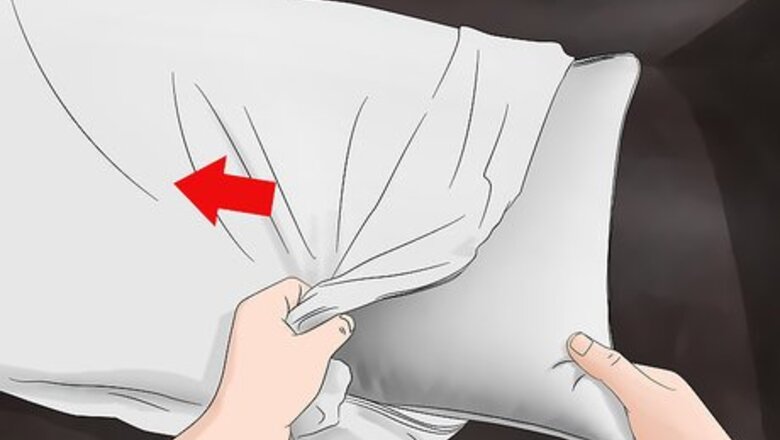
views
Using the Washing Machine
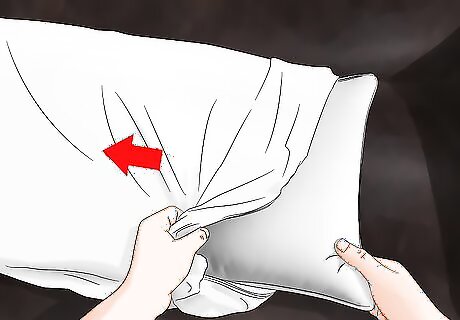
Remove the pillow protector. If you use a pillow protector for your down pillow, you'll want to remove it and wash it separately. You can typically wash your cover with the rest of your clothes if it's made of cotton. If the cover is made of a delicate material like silk you'll want to run it through a separate, delicate wash. If the cover is made of silk, make sure to air dry the cover instead of putting it in your dryer or it may shrink or get damaged.
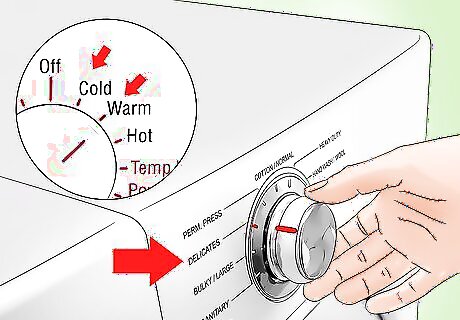
Set your washing machine to a delicate cycle. Set your washing machine to the woolen or delicate setting. Select cold or warm water to prevent pillow shrinkage. Use the highest possible spin speed to remove as much moisture as you can out of the pillow. If you have the option, adjust the settings so that there are two rinse cycles. Running the pillows through two rinse cycles will fully remove all the detergent from the pillows. Exposing your down pillow to hot water can cause it to shrink.
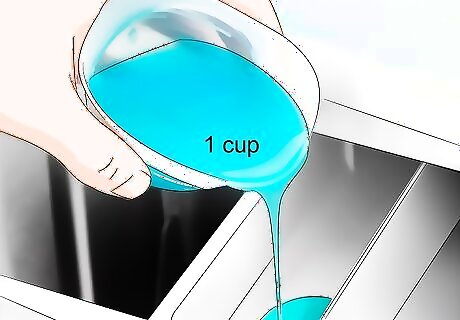
Add a mild detergent to the machine. If you have a top loading machine, add a cup (236.58 ml) of laundry detergent to the machine and run the cycle for 30 seconds. This should allow the detergent and water to mix together before you put your pillows in it. If you have a front load machine, pour a cup (236.58 ml) of laundry detergent into the detergent dispenser on the top of the machine. You can also add a 1/2 cup (118.294 ml) of oxygenated bleach to your laundry machine to make your pillows even whiter.
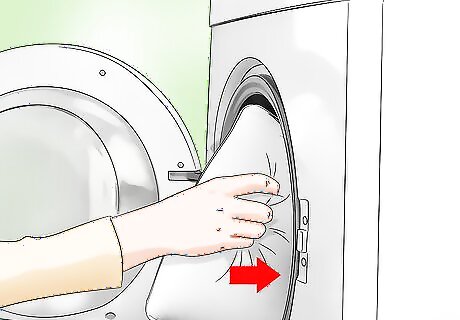
Place the pillows in your washing machine. If you have a top loading machine, press down on the pillows and get them fully saturated with water. If you have a front loading machine, you'll have to place the pillows in the machine before you start the cycle. Add two pillows to keep top load washing machines balanced. Down pillows are buoyant and will float in the water if you have a top loading machine. Getting them fully saturated before starting the cycle will prevent this.
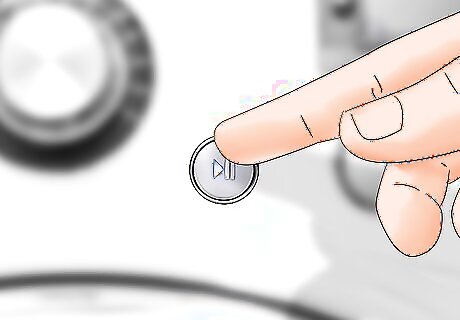
Close the lid and run the cycle. Close the door on the washer and allow it to run through the cycle. If your laundry machine only has a single rinse cycle available, run it through two full washes to ensure that all of the detergent is rinsed from the pillow.
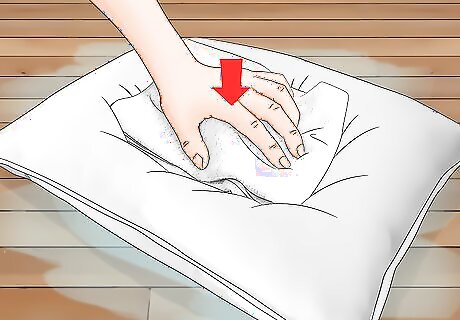
Press excess water out of the pillows. Once the cycle is completed, your pillows will be saturated with water. Press down on them with a terry cloth to absorb the excess water. You'll want to do this inside your washer machine, or else water will get everywhere. Do not wring or twist the pillow because you can destroy the feathers.
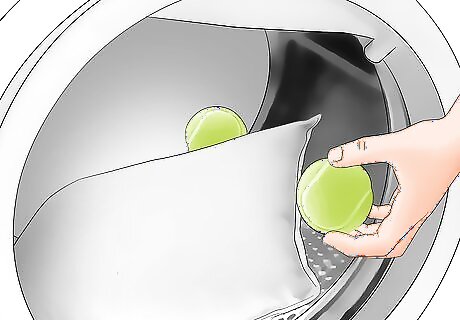
Dry the pillows in the dryer with 2 tennis balls. Set your dryer to the tumble setting with no added heat. Tennis balls will help fluff your pillows while they dry. If your pillows are not dry by the end of the cycle, run another dryer cycle until they are free of moisture. If you prefer, you can toss a dryer sheet in with your pillow to make it smell fresh!
Washing the Pillow by Hand
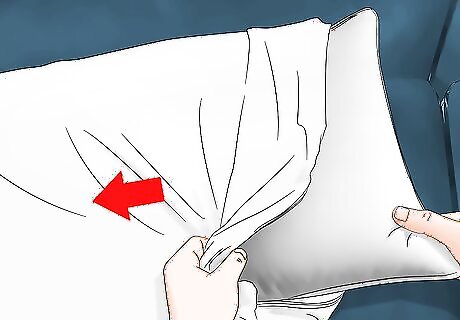
Remove the pillow protector. Before you can wash the pillow, you'll have to remove the pillow protector. Slip the pillow out or unzip the protector to reveal the down pillow.
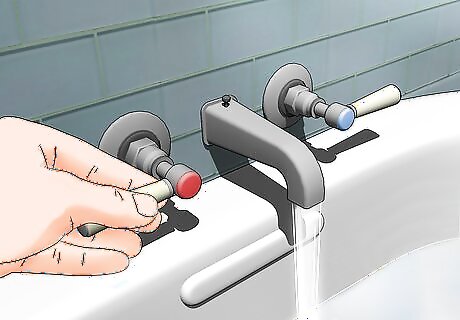
Fill your bathtub with warm water. Run the water until it becomes warm and then plug up the drain. If you don't have a bathtub, you can use a plastic bin or sink as long as it's large enough for your pillow.
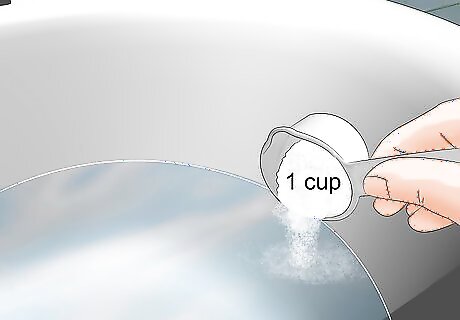
Add detergent to the water. Use a mild, pH neutral detergent. Dump a cup (236.58 ml) of the detergent into your water. Mix the water together until suds start to form. pH neutral detergents include Soak, Eucalan, and Tide.
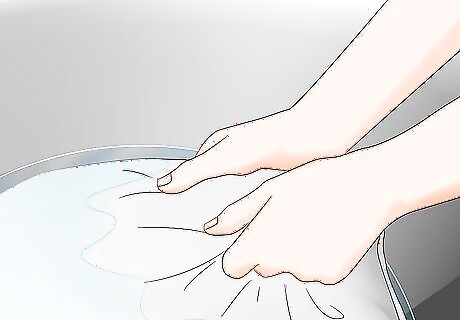
Dip and rub your pillow in the water. Submerge your pillow under the water and start to massage it in the soap. Continue to shake and massage the pillow until the detergent seeps into it. Get the pillow fully saturated and soapy. Continue agitating and rubbing stained or dirty areas of the pillow.
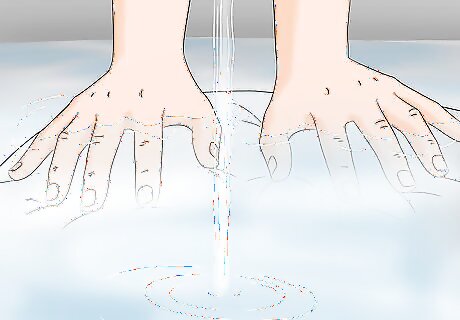
Rinse the pillow under the faucet. Drain the tub and rinse the pillow until all of the suds and detergents have been removed from it. Make sure that the pillow is totally free of detergent before drying it.
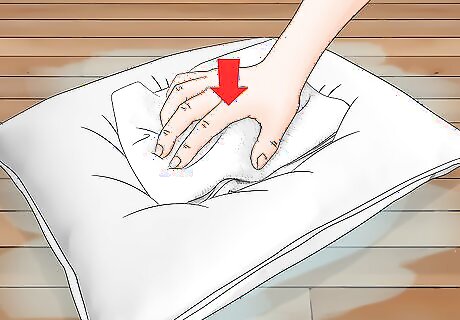
Press on the pillow to get rid of some moisture. Press down on the pillow with a terry cloth to soak up some of the initial moisture. Do not ring the pillow because you can damage the feathers.
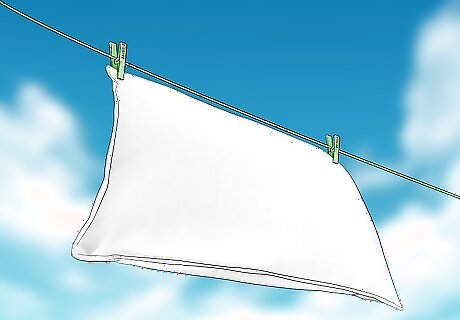
Hang the pillow to let it air dry. Hang the pillow on a clothesline or a hook and allow it to dry. You can also a hairdryer to speed up the drying process. Mold can form on damp or wet pillows.
Maintaining Down Pillows
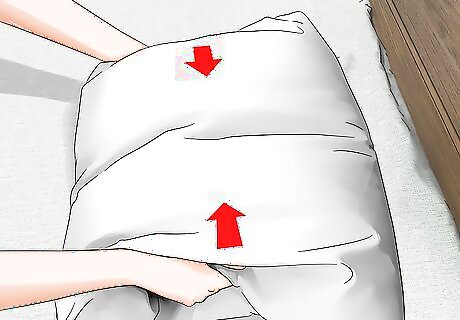
Fluff your pillows regularly. When you wake up in the morning, you should turn the pillow over and fluff it. This will help your down pillows retain their shape. It will also remove dirt or dust that's built up on the pillow. You may occasionally want to fluff and freshen your pillow in the dryer. Put your pillow into the dryer along with 3 tennis balls, a fabric softener sheet, and a wet wash cloth. Run the dryer on a low setting for 20 minutes.
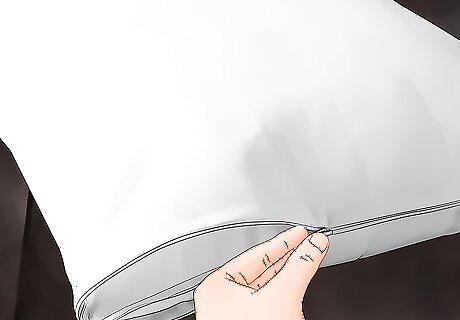
Use a protective cover. A pillow cover can help protect your down pillow from dust mites, dirt, and oils. If you use a protective cover over your pillows regularly, you'll have to clean them less often.
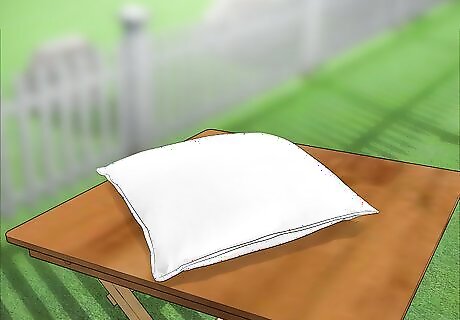
Air your pillows out regularly. Every few months you should air out your pillows. On a sunny, clear day, place your pillows on a clothesline or on a table outside. Fluff the pillows and turn them over after an hour. This will remove musty smells from your pillows and will dry out any moisture in them.



















Comments
0 comment